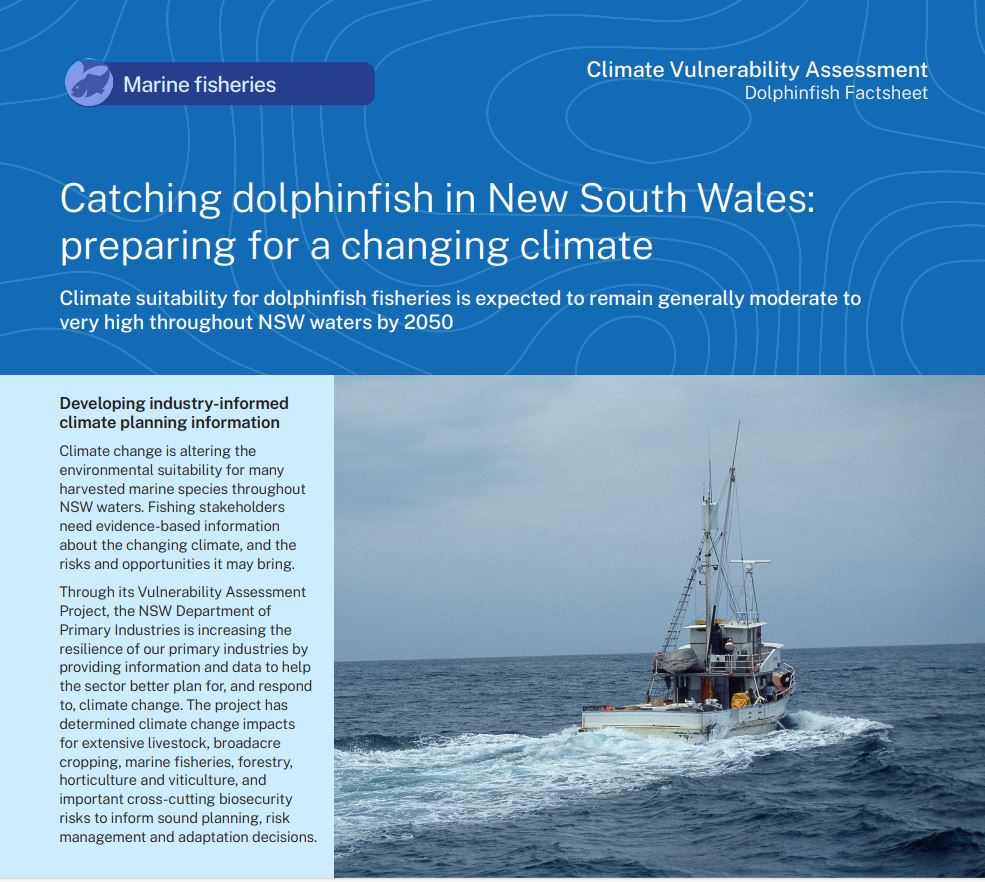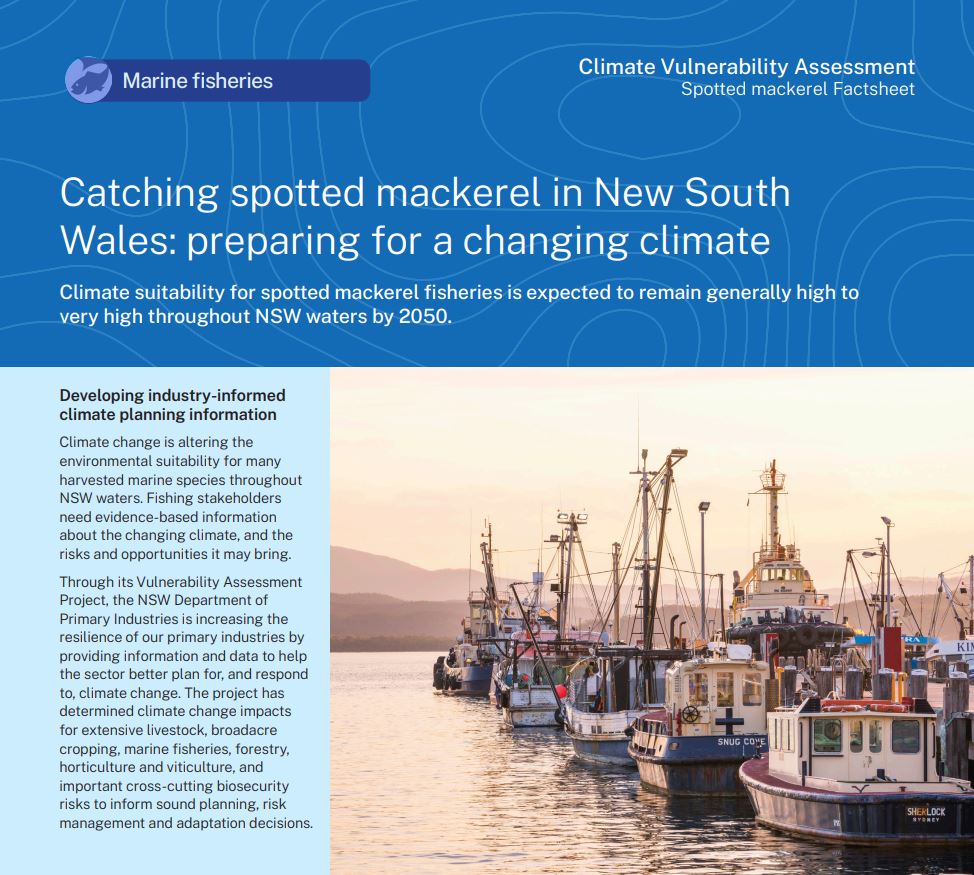Climate Vulnerability Assessments
For marine fisheries, the selected species included:
- Australian bonito (Sarda australis)
- Australian spotted mackerel (Scomberomorus munroi)
- Narrow-barred Spanish mackerel (Scomberomorus commerson)
- Common dolphinfish (Coryphaena hippurus)
- Yellowtail kingfish (Seriola lalandi)
Results
The Climate Vulnerability Assessment modelled the historical and future climate suitability for the selected fisheries species in NSW waters. These assessments considered the change in suitability between the historical (1981-2010) and future time periods (2036-2065), reported separately for the two emissions scenarios.
Maps of historical and future climate suitability for marine fisheries were produced to identify where along the coast a commodity is likely to thrive or else be limited by future climatic conditions. The maps are not provided on these webpages but can be found in the Climate Vulnerability Assessment Summary Report. The factsheets below provide the results by discussing the important impacts and providing interpretation of the drivers of changed suitability.
Care should be taken when interpreting these results. The Climate Vulnerability Assessment is intended to highlight potential changes in future climate suitability at regional scales.
Due to the large number of outputs, not all results have been provided at this stage but will appear in individual commodity results reports. Commodity results reports will be released in 2024. Register your interest in receiving a copy by contacting vulnerability.assessment@dpi.nsw.gov.au
Factsheets
Bonito factsheet
PDF, 636.35 KB

Dolphinfish factsheet
PDF, 648.77 KB

Kingfish factsheet
PDF, 852.91 KB

Spanish mackerel factsheet
PDF, 1080.97 KB

Spotted mackerel factsheet
PDF, 636.23 KB

Approach
The Climate Vulnerability Assessment required a modelling approach that could be rapidly and consistently applied to different commodities and biosecurity risks to produce consistent and comparable models. To this end, a framework was developed which combined research literature, expert industry knowledge and climate data in a modelling approach known as ‘multi-criteria analysis’ (MCA model). The resulting MCA models were used to evaluate the suitability of NSW’s climate for chosen commodities and biosecurity risks.
The general assumptions for the marine fisheries MCA models were:
- a specific fish species is described,
- best practice management is undertaken,
- fish are free of pests and diseases and
- dates of phenophases for each species are fixed.
For more information on the methodology and data used in the climate vulnerability assessments, please refer to either the methodology summary page or, for an in-depth explanation, the Climate Vulnerability Assessment Methodology Report.
References
Tuynman, H and Dylewski, M 2022, Australian fisheries and aquaculture statistics 2021, Fisheries Research and Development Corporation, ABARES, Canberra, December, DOI: https://doi.org/10.25814/amdt-x682.